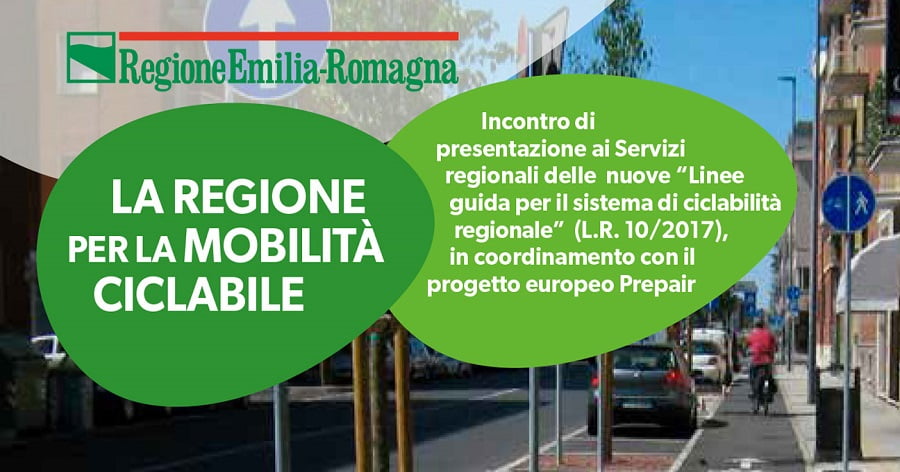During the past month of May, we toured the provincial capitals of Emilia Romagna to present the new regional guidelines for the promotion and development of cycling. It is a document of more than 200 pages that has occupied us in its drafting for almost a year. A final product in which issues related to bicycle mobility are addressed across the board.
The project was commissioned by the Emilia Romagna region to the working group consisting of architects Matteo Dondè, Valerio Montieri, Paolo Gandolfi and communication expert Paolo Pinzuti.

The goal of the guidelines is to begin a journey that can lead Emilia Romagna to become an increasingly bicycle-friendly region.
To do this, it was essential to create a document that could direct and help various professionals and public agencies in the implementation of bicycle-friendly cities and territories.
Quality standards and not minimums, long-term vision and not election spots, industry innovations and proven solutions were the cornerstones that laid the foundation for the document posted on the region’s website.
Emilia Romagna’s “Guidelines for the Regional Cycling System” thus represents the most up-to-date publication in Italy on cycling adopted by public bodies, a useful tool to learn about the most advanced strategies and solutions when it comes to urban and suburban cycling.
The document adopted by the region fully meets the new requirements of Regional Law 10/2017 and the new national framework law on cycling no. 2/2018.
Through the guidelines, issues such as the separation or sharing of space between different road users, solutions such as traffic moderation through changes in the physical layout of the roadway, and the organization of events and specific communication campaigns aimed at the use and promotion of bicycles as a means of transportation are addressed.
At the end of the publication it is possible to consult a concise overview of the interventions proposed in the initial parts of the paper, thanks to the presence of an appendix organized in tabs with a rich iconographic part consisting of 3D views, sections and example photos.

The feedback from the participants at the various guideline presentations was very high: full conference rooms, questions and continuous nods of assent showed all the interest and appreciation for the work done.
All those interested in viewing the final documentation can download the “Guidelines for theRegional Cycling System” at the following link.

Bikenomist Srl
Consultancy – Communication – Training
Bikenomist is a team of professionals with the aim of making Italy a cycling country.
Address:
Viale A. Gramsci, 463
20099 Sesto San Giovanni, MILANO
Legal address:
Via Pietro Giannone, 6 – 20154 Milano
Codice fiscale and VAT number: 13226291006
© 2024 Bikenomist. Privacy Policy

